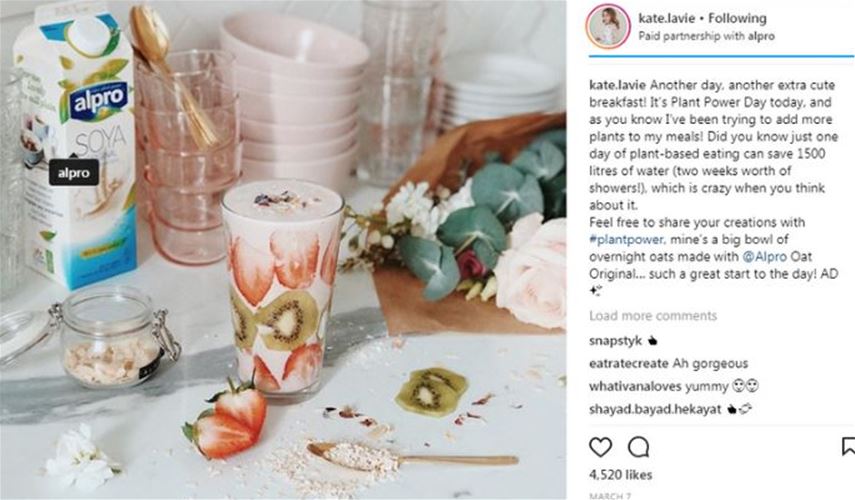The UK’s Advertising Standards Authority (ASA) has launched a project to review how paid-for influencer and native advertising is sign posted online after it has emerged that 49% of UK shoppers are not aware of the language used to disclose commercial relationships between brands and influencers including terms like #spon, #sp and #ad.
ASA chief executive Guy Parker has said “Social influencer and native advertising might be relatively new but the advertising rules haven’t changed and people shouldn’t have to play the detective to work out if they’re being advertised to.”
“That means the status of a tweet, blog, vlog, Instagram post or story should be clear. Our call for evidence will play an important part in helping us understand how consumers recognise and respond to online labelling of ads and how we apply the rules in this area.”
As it stands, there are ways in which you can signpost your paid-for content and best practice is to be as transparent as possible. In this post we’ll outline what paid-for content is and ways you can make this clear on social media.

A paid-for partnership between Khloe Kardashian and Amazon featured on Instagram
What is paid-for content?
Exactly how it sounds – content that has been produced in exchange for payment. Payment may not necessarily be monetary; free items count too. If an influencer accepts something on the condition that it is to be reviewed, in a positive or negative way, the ASA views this as an advert and it would be expected that the influencer discloses the nature of the relationship.
Why wouldn’t a brand or influencer want to disclose paid-for content?
The main reason both parties may be reluctant to disclose a piece of paid-for content is because they think an audience will not engage with it. However, the blogosphere is a very supportive community and, if anything, we are seeing audiences in full support of influencers partnering with amazing brands and receiving FOMO-inducing opportunities. In the words of UK fashion and lifestyle blogger, Chloe Plumstead, “There’s money to be made in the world of influencer marketing, and there’s absolutely no reason why we shouldn’t be going for it.”
Who takes responsibility for disclosing paid-for content?
Both the brand and the influencer. Whether the paid-for content is controlled by the brand or whether you have taken a hands-off approach and given the influencer free reign, it is the responsibility for both parties to ensure an audience knows they are being advertised to. It is best practice to ensure you are clued-up on ASA requirements and we would advise being clear about disclosure expectations at the beginning of any partnership.
How should I disclose paid-for content over social media?
The reason the ASA have launched this project is because currently there is no one-size fits all approach. Hopefully in the future this will change but at the time of writing, different social media channels approach disclosure in different ways. We have outlined how paid-for partnerships should be disclosed on social media channels below but if you’re in any doubt you’re best to contact the ASA directly who will able to clarify.
Instagram offer the clearest solution to disclosing paid-for content with the introduction of its branded content tagging tool in 2017. This tool helps users to better identify organic content from sponsored content and in-turn brands and influencers to maintain credibility amongst their audience.
We previously published a blog post on how to set up branded content tagging on Instagram which you can read here.

Blogger Kate Spiers discloses her partnership with Alpro using the Instagram content tagging tool. Image: Instagram
Just like Instagram, Facebook have introduced a branded content tagging tool to their platform. Facebook requires paid-for posts to be tagged with the business partner. These branded content posts can then be recognised by seeing ‘Paid’ within the post just underneath the ‘with’ tag that identifies the business partner.
Facebook have a great, comprehensive step-by-step guide on how to set up the branded content tagging tool here.

Facebooks branded content tagging tool ensures audiences know when a piece of content had been paid for. Image: Facebook
YouTube
Advertorial videos need to be labelled upfront so that viewers are aware and understand that it is an advertorial before engaging – the before bit is important. The ASA advises that “ad”, “ad feature”, “advertorial” or similar are included early in the video title or included in the thumbnail. Relying on including #ad or similar in the description box isn’t appropriate because this isn’t immediately visible. It is also not appropriate to label the video “sponsored” because this could cause confusion to viewers.

Zoe Sugg clearly labels her paid-for partnership with Waitrose on her YouTube channel. Image: YouTube
Twitter doesn’t have a content tagging tool of its own at the moment, so you will need to tag a tweet with #ad, ad feature, advertorial or similar. This needs to be in the main tweet, just like with YouTube, it needs to be immediately visible so do not post as a reply or comment.

Blogger Em Sheldon labels her paid-for partnership with EE on Twitter. Image: Twitter
Find out more about influencer marketing for your business – contact us.
Like what you’ve read? Take a read of our blog post about how influencer marketing can drive your brand awareness.